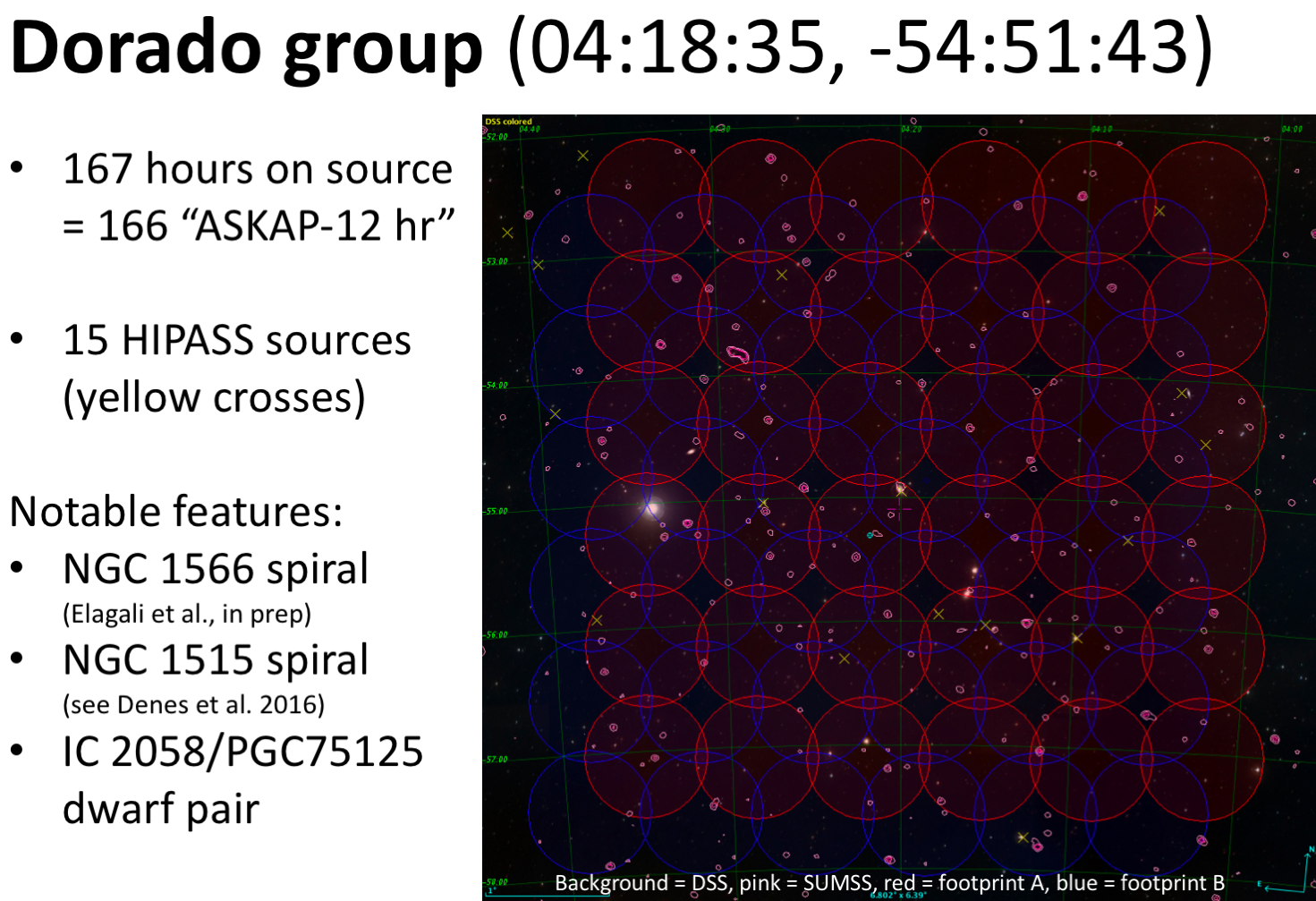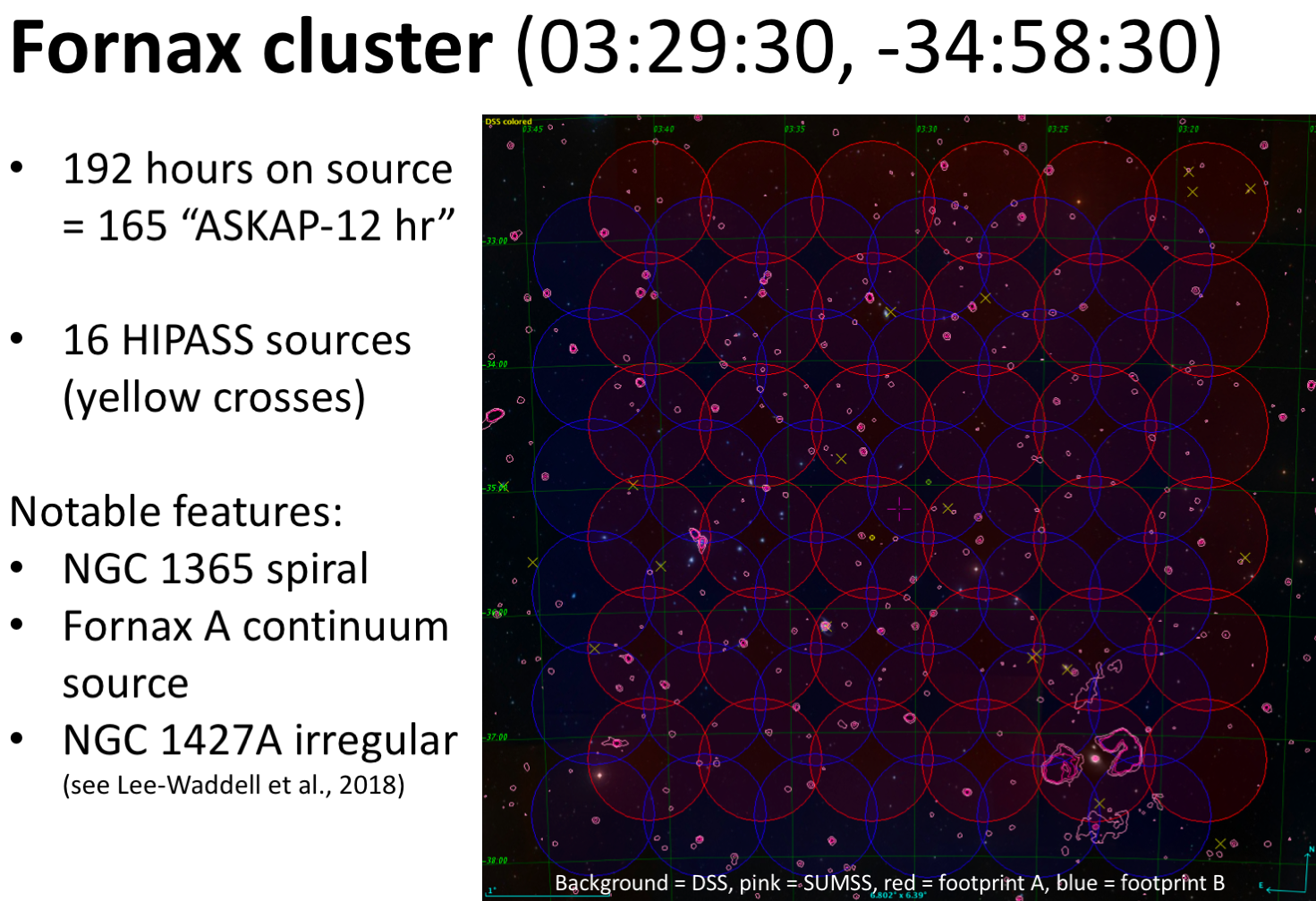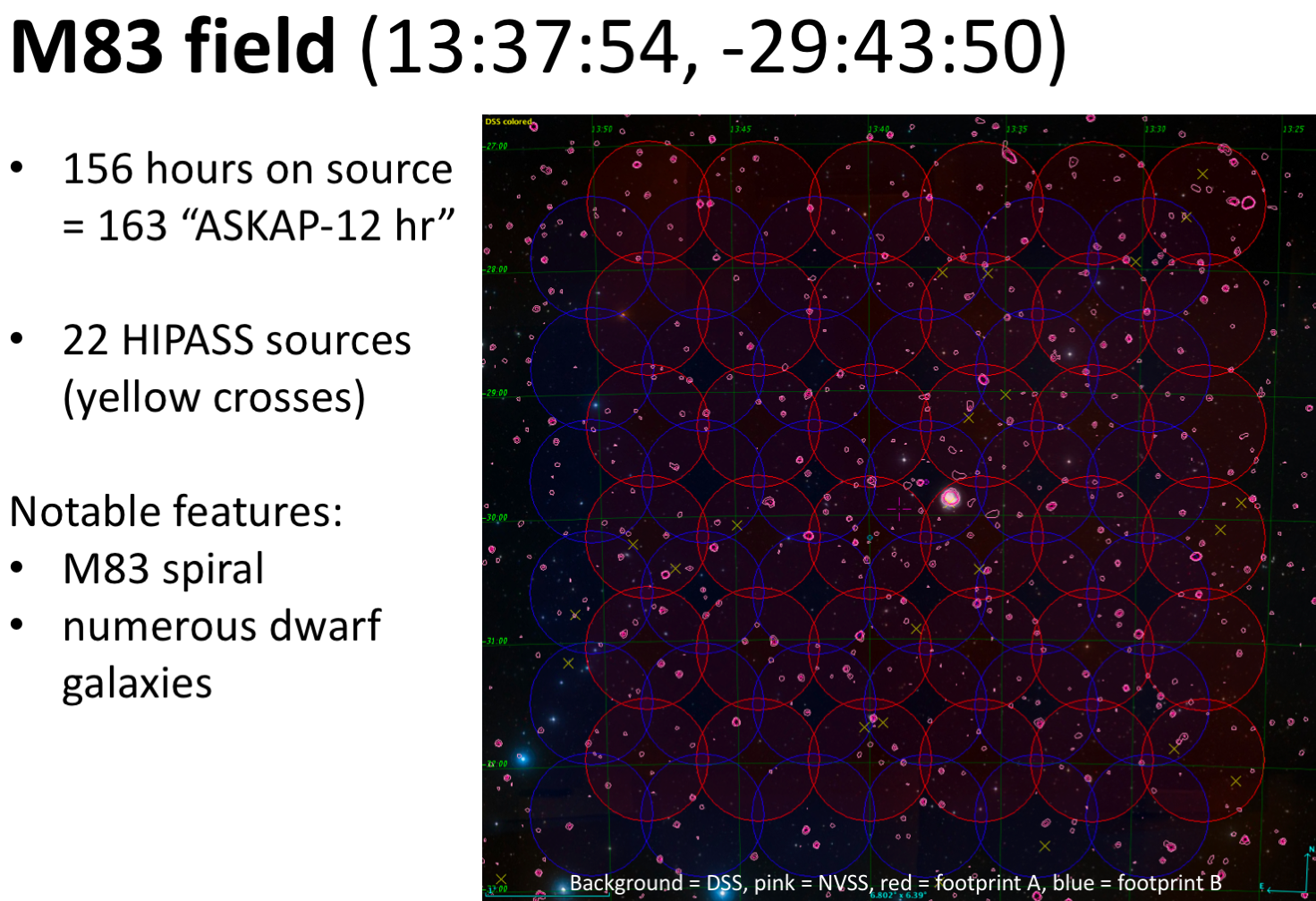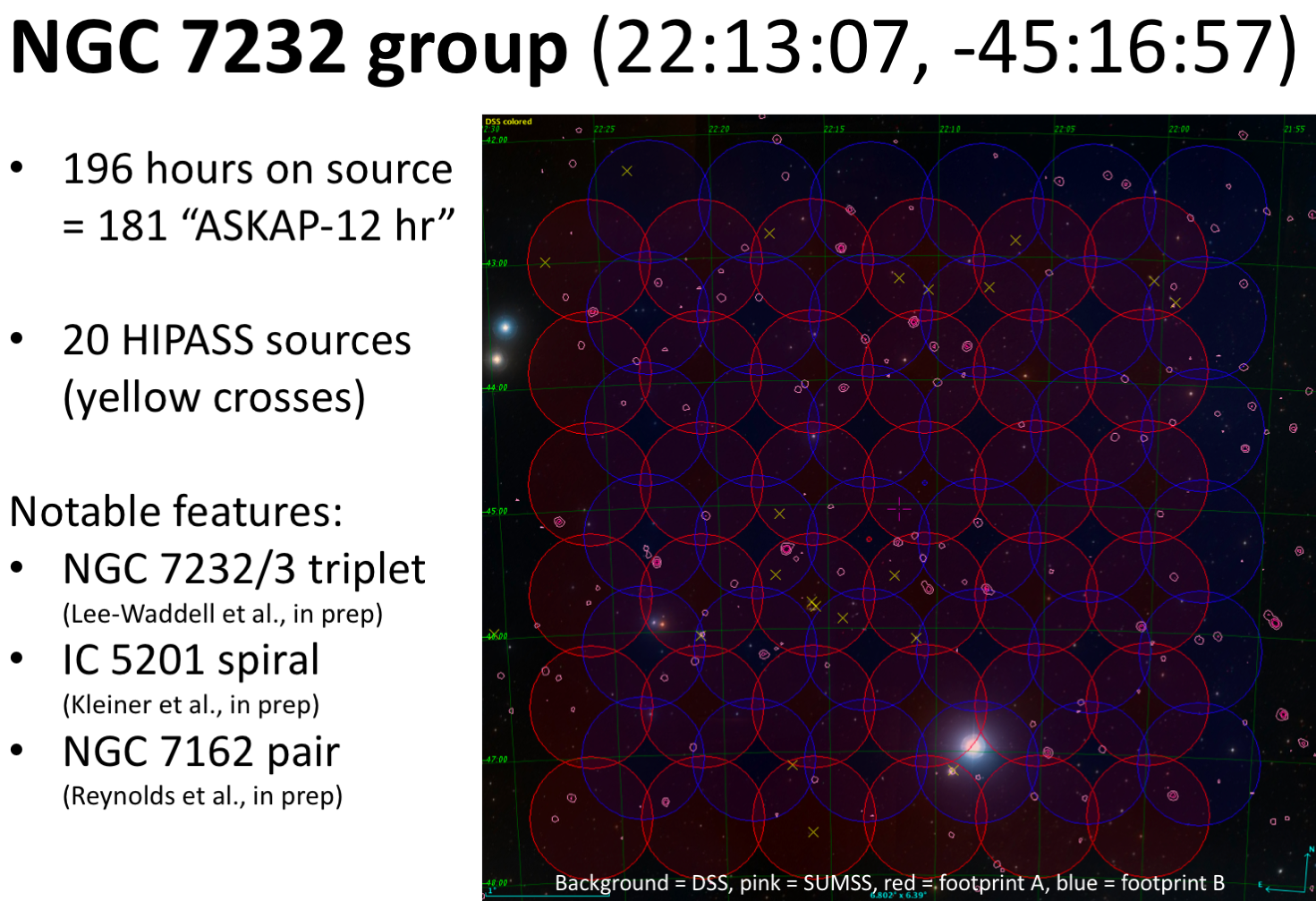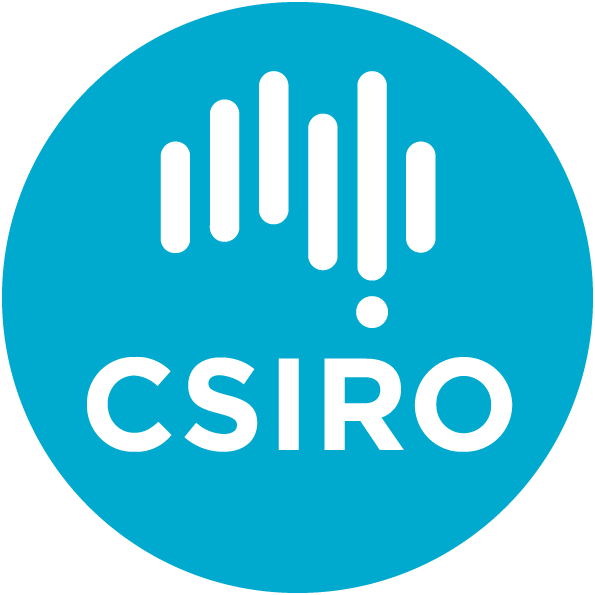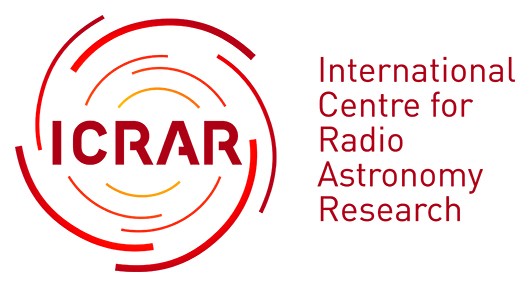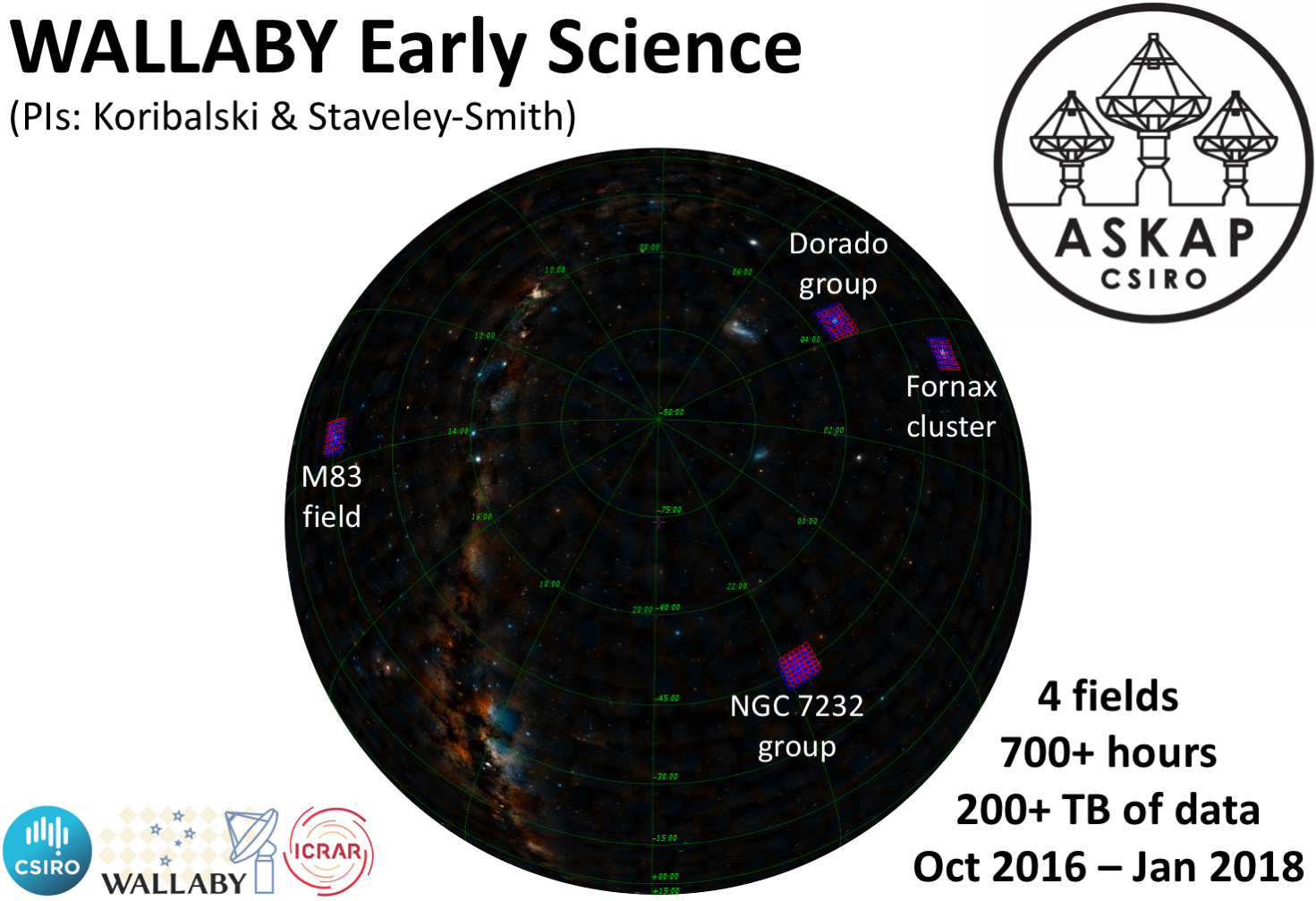
ASKAP Early Science is an observing program aimed at producing scientifically useful data, with at least 12 MkII PAF-equipped ASKAP antennas (i.e. ASKAP-12), while commissioning ASKAP to full specification. The priorities for this program are to demonstrate the unique capabilities of ASKAP, produce data sets to facilitate the development of data processing and analysis techniques, and achieve high scientific impact.
In October 2016, ASKAP officially started Early Science with observations for WALLABY. Over 700 hours of observations later, ASKAP has sufficient data to reach full WALLABY survey sensitivity on four different science fields. Read more about the “ASKAP commissioning odyssey”
The WALLABY team had originally selected 30 potential Early Science target fields, which are located in different regions of the sky and cover a broad range of scientific interests. In order to study the HI properties of galaxies as a function of environment, the selected fields needed to contain gas-rich nearby galaxy groups, a nearby galaxy cluster, or have a high (spiral) galaxy density overall. Prioritization took into account the availability of complementary data (e.g. multi-wavelength images, redshift measurements) as well as published ATCA HI maps for validation and combination.
Assuming Tsys/eff ~ 85K and taking into account additional overheads for fringe rotator flagging (a feature of Early Science that should be alleviated for full ASKAP), roughly 160 hours of on-source observing time — with ASKAP-12 — are required to reach the WALLABY survey target RMS of 1.7 mJy/beam per 4 km/s channel.
The follow summary images detail the four observed fields. Two interleaves of the square 6×6 beam footprint capitalize on ASKAP large field of view while maintaining even sky coverage. Since ASKAP was still in its commissioning and shared-risk phase, the number of working antennas for each Early Science observing round varied (i.e. some nights only had 9-10 working antennas; whereas, the most recent observations took advantage of 16 fully commissioned ASKAP antennas). As such, the on-source times have been converted to reflect the equivalent sensitivity of ASKAP-12.
